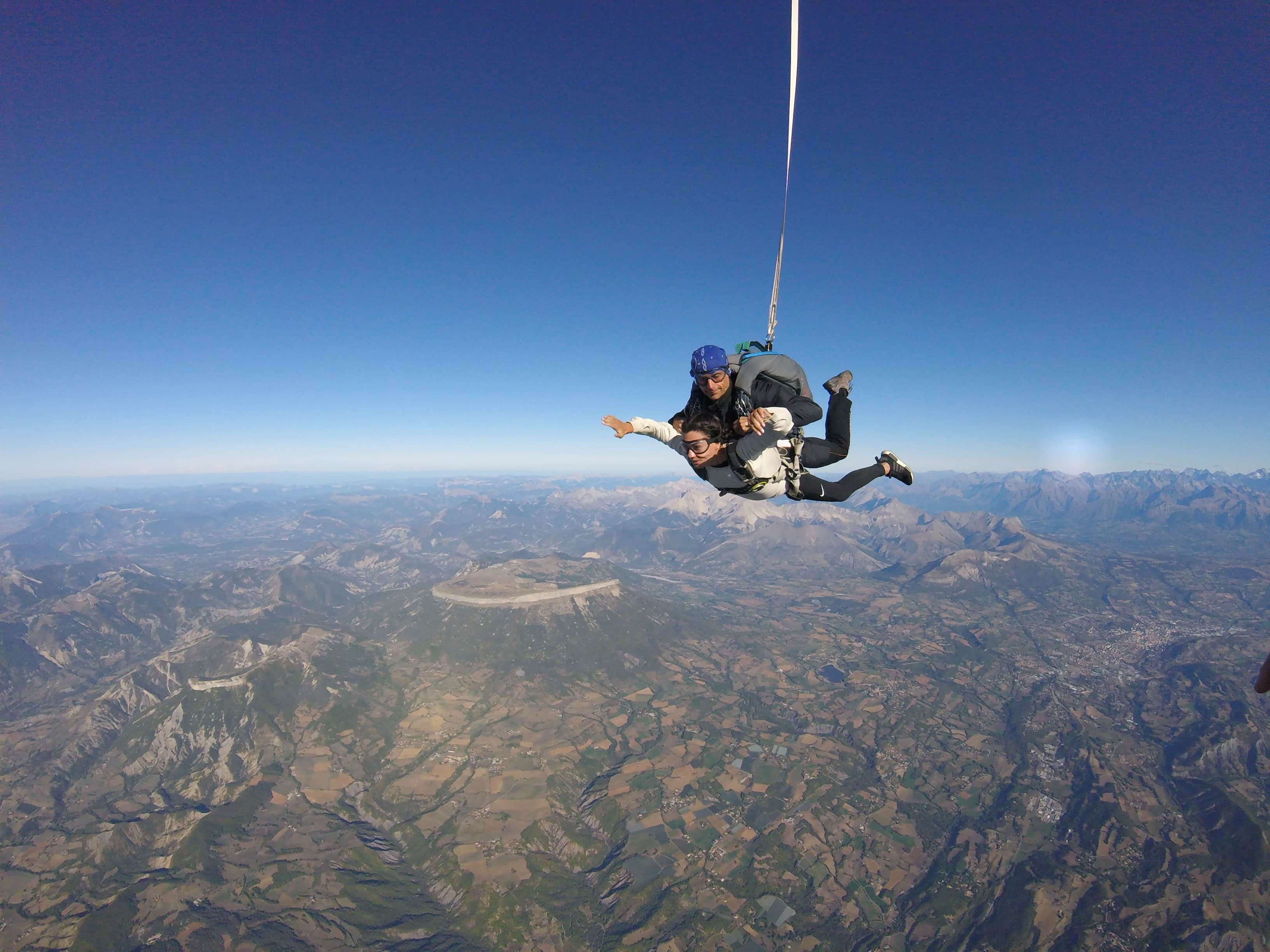
Top 12 skydiving spots in France
Discover the best skydiving spots in France: over the beaches of Corsica, facing the Mont Blanc, admiring Mont-Saint-Michel and next to Paris!
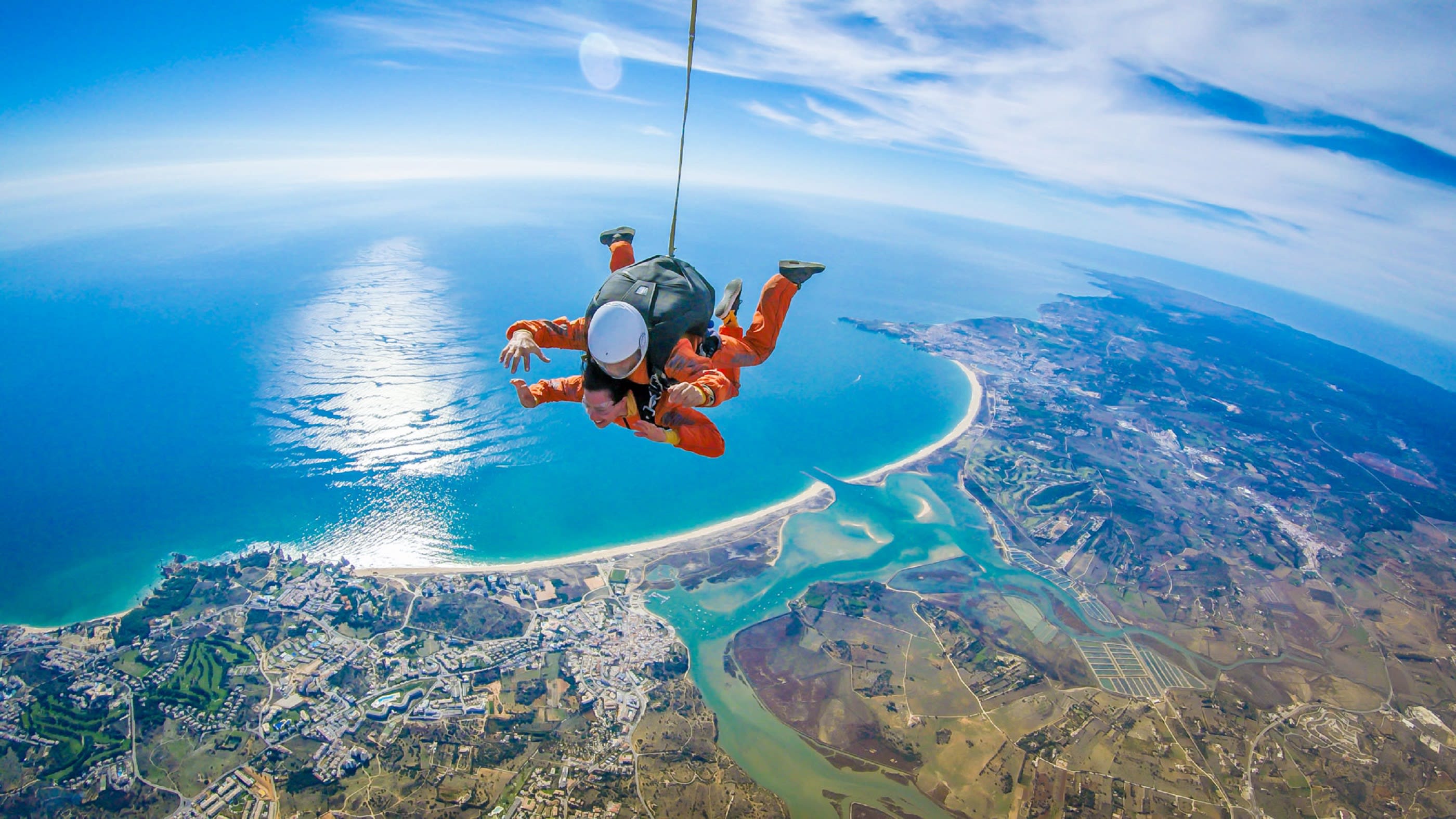
Skydiving is an extreme-sensations activity that will remain engraved in your memory! Do you have any questions or doubts before taking the plunge? Here's a list to help you prepare for this unforgettable experience.
You've decided you want to try skydiving for an adrenaline boost, or to go beyond your limits. Whatever the reason, you probably have a lot of questions running through your head. Find out everything you need to know before jumping out of a plane for a crazy 200 km/h descent!
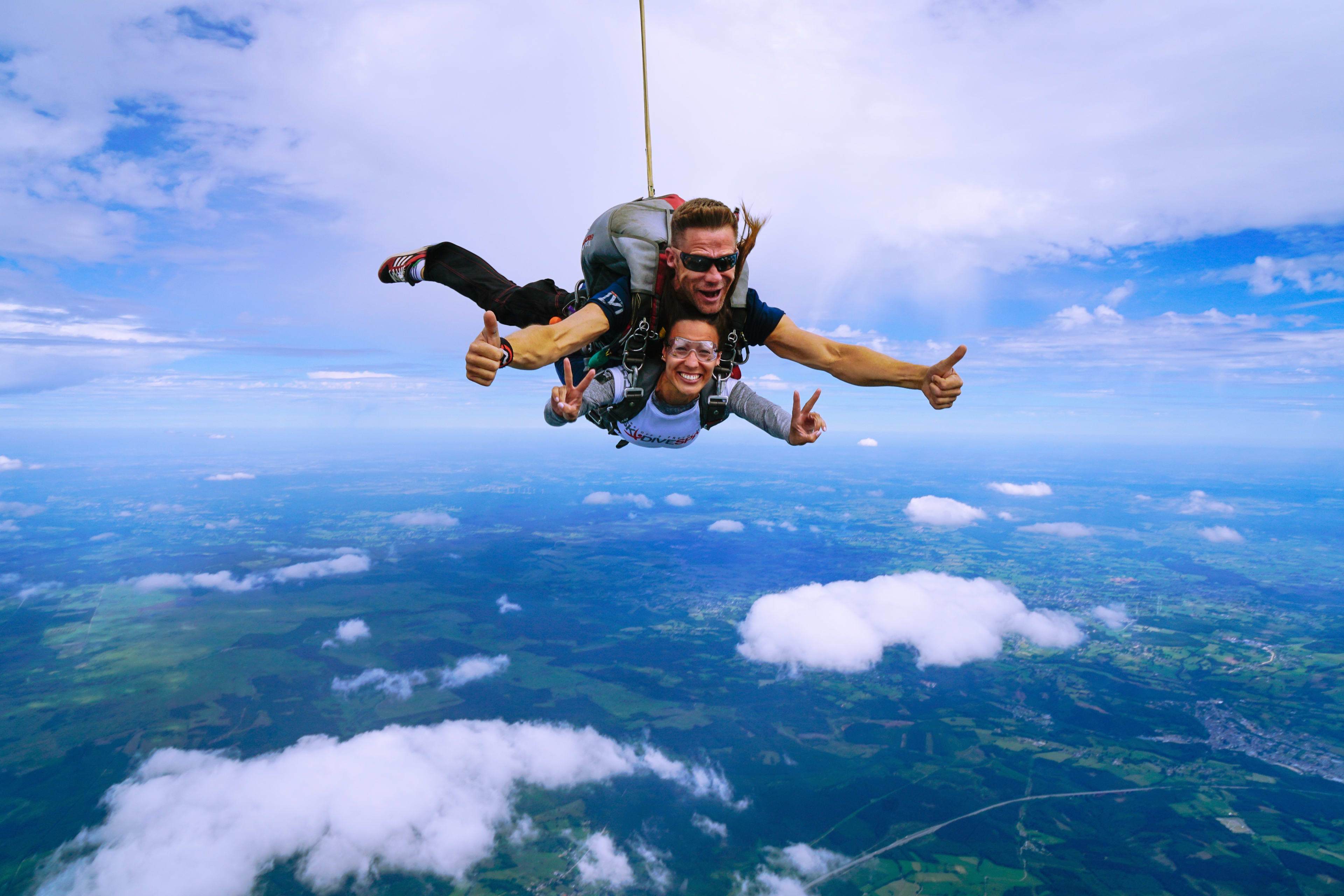
Technically, you can jump at any time of year, but it's best to wait until the weather's fine before taking the plunge. In principle, your instructor will have to reschedule your jump if it's raining, because it's always more enjoyable if the weather is fine, so you can make the most of the view and panorama. This is why some centres close between November and March. If the weather is bad, the plane remains on the ground and you will have to wait for the weather to improve so that you can take off in good conditions. Always allow half a day to be sure!
This varies from country to country, but in general the minimum age for a tandem skydive is 15 with parental permission, although some centres accept children from the age of 12 (they must be accompanied by a parent). Note that a minimum weight of 40 kg is generally required.
The maximum weight is often between 90 and 95 kg for a tandem. If you are very corpulent or heavier than 100 kg, you will have to negotiate with the centre where you have booked to see what the weight of the instructor accompanying you will be. Ideally, the two of you should not exceed the maximum weight that a parachute can support.
As a general rule, the first jump is a two-seater, meaning that you are alongside a certified instructor who is attached to you and who controls the entire descent, the trajectory, the opening of the parachute and the landing. However, if you want to practise this extreme sport on your own for the first time, you can follow a PAC(Progression Accompagnée en Chute) training course or introductory jump, which teaches you the theoretical basics of freefall with one or more jumps, depending on the formula.
Prices vary between €230 and €400, depending on the destination. Note that prices are sometimes lower during the week, depending on the region. This price includes equipment hire (parachute, harness, etc.) and your seat in the plane. The PAC introductory jump costs around €100 more, but you'll be jumping alone from the first time, and subsequent jumps will only cost around €30, depending on the location. You can also take a PAC course, which costs around €1,300 and includes 6 accompanied and supervised jumps. The PAC course also offers you an insurance licence issued by the country's federation, as well as a dedicated diploma.
If you want a photo or video to immortalise your aerial performance, you'll have to pay between 80 and 120 euros more, as you'll have to pay the instructor who jumps with you to film you. This service is generally included in the PAC course.
You need to be in good health to take part in this extreme sport. It is not recommended if you have an ENT problem linked to decompression, a heart problem or if you suffer from back pain (mainly due to the landing). Pregnant women are rarely allowed to take part in this activity, and in any case, for the majority of schools holding a state certificate, you will have to see your doctor before the big jump. So it's your doctor who will decide whether or not to approve your request, depending on your state of health. However, you should avoid jumping if you have consumed alcohol 12 hours beforehand or if you have been scuba diving the day before. It's best to eat well beforehand, as you'll be expending a lot of energy!
If you suffer from airsickness or vertigo, you can still skydive. Vertigo is a phenomenon linked to your sense of balance and not to the sensation of falling, so there's no problem there. At 4,000 metres, you lose your bearings with the ground, so you don't have the sensation of height. It seems that the greatest parachutists suffer from vertigo...
There's no such thing as a bad skydiving school, because they're all very safety-conscious! The instructors are all experienced, all have a licence and hundreds of jumps under their belts before they can take you up into the sky. The parachutes are rigorously packed and always checked. So there's no risk whatsoever in this extreme sport.
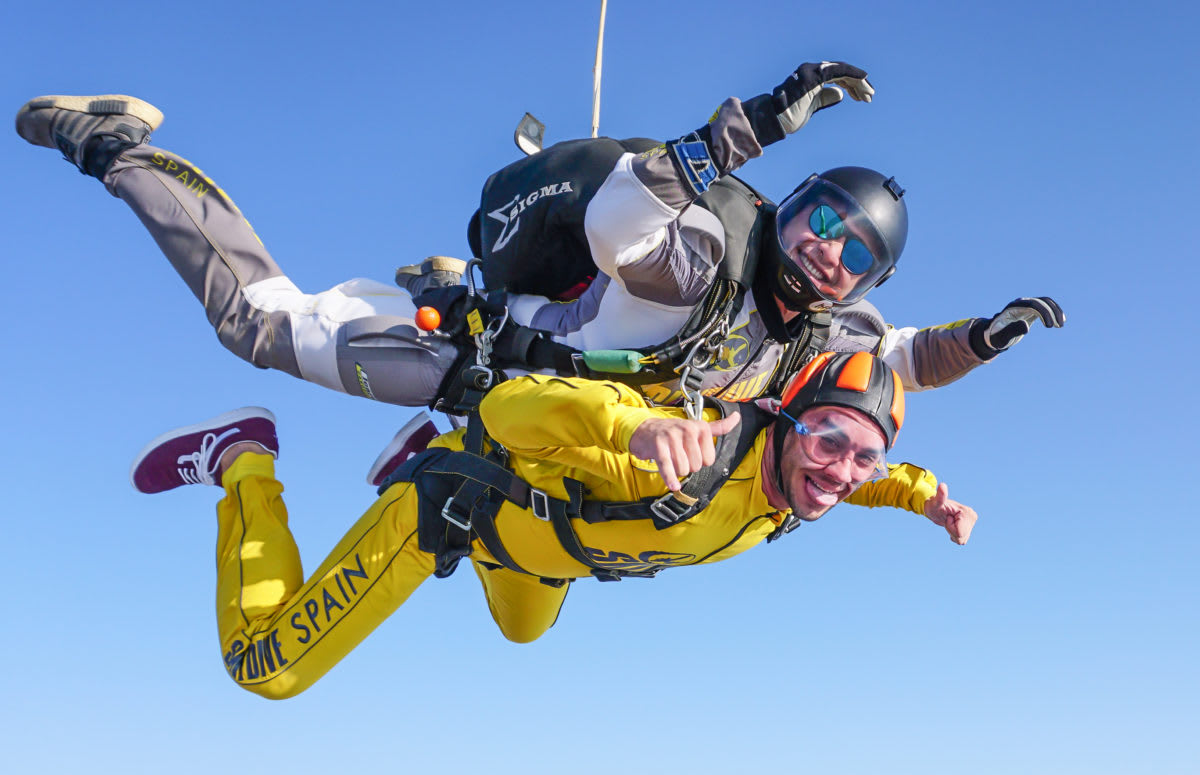
The equipment (which mainly comprises the main parachute and the reserve parachute) is included in the hire, as are the harness, altimeter, helmet, wetsuit and goggles. So you don't have to bring anything with you and you can dress as you like, although it's best to dress well because it's not so hot up there. The only thing you're not allowed to do is wear high boots with laces, because you have to be able to take them off in flight if you need to.
In tandem, the maximum height is 4,000 metres. If you want to jump higher, you'll need small oxygen cylinders to breathe at altitude, but this is never suggested for a first parachute jump.
The free-fall section (where you reach 200km/h in less than 10 seconds) lasts between 50 and 60 seconds and is the best part of the experience because it's where you'll get the most adrenalin and thrills. At around 1,500 metres from the ground, your instructor will activate your parachute, which will have the effect of slowing your fall. You'll still have 4 or 5 minutes of fun contemplating the sky and landscape before landing.
Don't worry about this. In tandem, it's the instructor who activates the parachute and if you jump alone and it doesn't work, you have a reserve parachute. But if you forget to activate it, you should know that the parachutes are equipped with safety openers that activate automatically at a certain altitude. So whatever happens, your parachute will open and everything will be fine. What's more, the instructors on the plane won't let you jump without checking everything, so don't worry!
In France, all participants are normally required to have a medical certificate less than 6 months old stating that they are not contraindicated in the practice of this sport before jumping, but some schools are less strict about this rule.
If your friend is the instructor, this will be possible, but otherwise you'll have to jump one after the other. It's not like bungee jumping where you can jump at the same time. It is not possible for two people to jump simultaneously in tandem, as that would mean a total of 4 people leaving the plane at the same time. You need to allow at least 10 seconds between each jump from the same aircraft.
Your friend can come on the plane with you by paying for his ticket (around 30 euros and he will also have a parachute) and he can also wait for you at the landing zone (you will have to choose between these two options as it will be difficult for him to do both for obvious reasons unless he knows how to teleport). However, he won't be allowed to film your fall as this is reserved for skydiving centre staff. And you can't film your own fall with your phone either, as it's forbidden for safety reasons.
The glasses are supplied and can be placed in front of your glasses or sunglasses, so you don't have to worry about that. If you have the choice, opt for contact lenses that day.
Yes, in principle, but what's the point if you can't enjoy the scenery? And you need a C licence to make a night jump (200 jumps minimum).
The air becomes thinner with altitude, and this simply causes the temperature to drop. We lose around 7°C every 1,000 metres of altitude, so at 4,000 metres it's already cooler, even in August in Central Africa. So pack a little wool for your parachute jump and you'll be fine.
Between take-off and the fateful moment when you jump out of the plane, it takes around twenty minutes to reach the right height. It's enough to put pressure on you and make you wonder a hundred times why you wanted to do this. Once you're on the ground, you'll thank yourself for not having given up on the idea, because this experience will remain engraved in your memory forever!
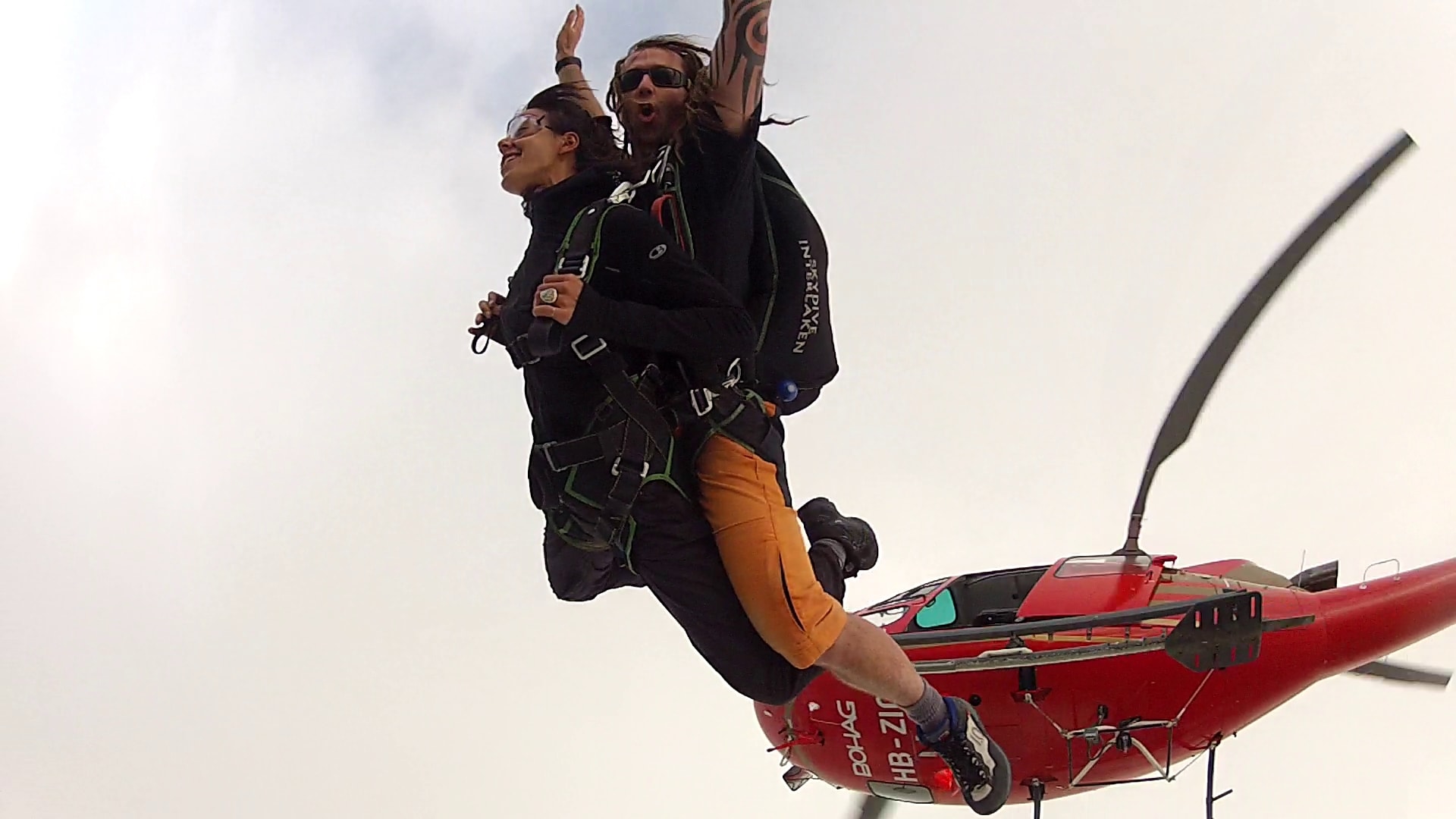
In theory, you can also jump from a helicopter or hot-air balloon, although this is less common than jumping from a plane. Not sure what to choose? Don't worry, we've put together a list of things you need to know to decide whether to jump from a helicopter or a plane!
The tandem jump takes about half an hour. A qualified instructor will explain the jump and landing procedure, along with safety instructions, and you'll be ready to take off. If you choose the PAC option to jump alone, then the training lasts 8 hours before the first jump, as you will then be responsible for and in control of your actions in flight, so needless to say, nothing is left to chance.
During the freefall, you won't really have time to appreciate the beauty of the panorama, as you'll be enjoying the intense sensation. Once the parachute is deployed, you'll be amazed by a unique spectacle, so choose a beautiful spot for your jump!
This almost never happens during freefall. It's very rare to find a bird flying at 4000 metres... You may come across one during the descent under canopy, but there's no danger as it will avoid you.
This never happens, because once you're at the top, all you want to do is jump. At worst, the instructor will push you, but you'll thank him afterwards. And in any case, it's said that jumping is no more frightening than staying in the plane, because on the way back to base the pilot goes into aerobatic mode, positioning the machine vertically with its head down! It's better to jump first, isn't it? Besides, the airlines never reimburse you for a jump, so you might as well do it! In the event of strong winds, rain, fog or thunderstorms, the jump will be postponed, not cancelled.
There's no delay if you want to make a second jump. If you've paid and want to do it again, you can catch the next plane and off you go again! You'll need to wait until you've packed your parachute first, which takes about half an hour. You can do up to 6 tandem jumps in a day if you feel like it.
Now that you know everything, why not book your next skydiving adventure? If you're looking for a place to go skydiving in France, you'll find ideal spots all over the country! And if you don't feel 100% ready yet, try the free-fall simulator to feel the adrenalin!